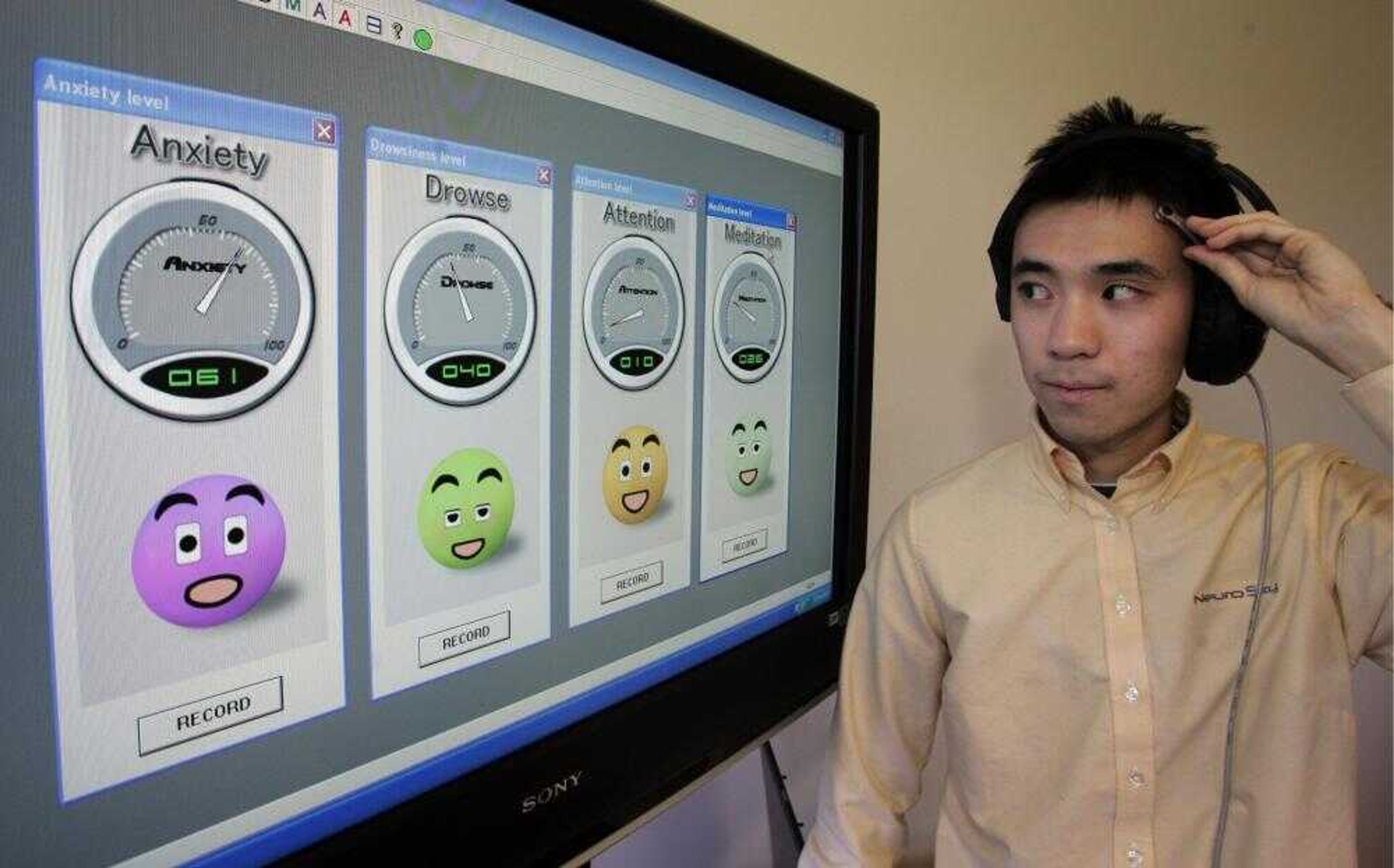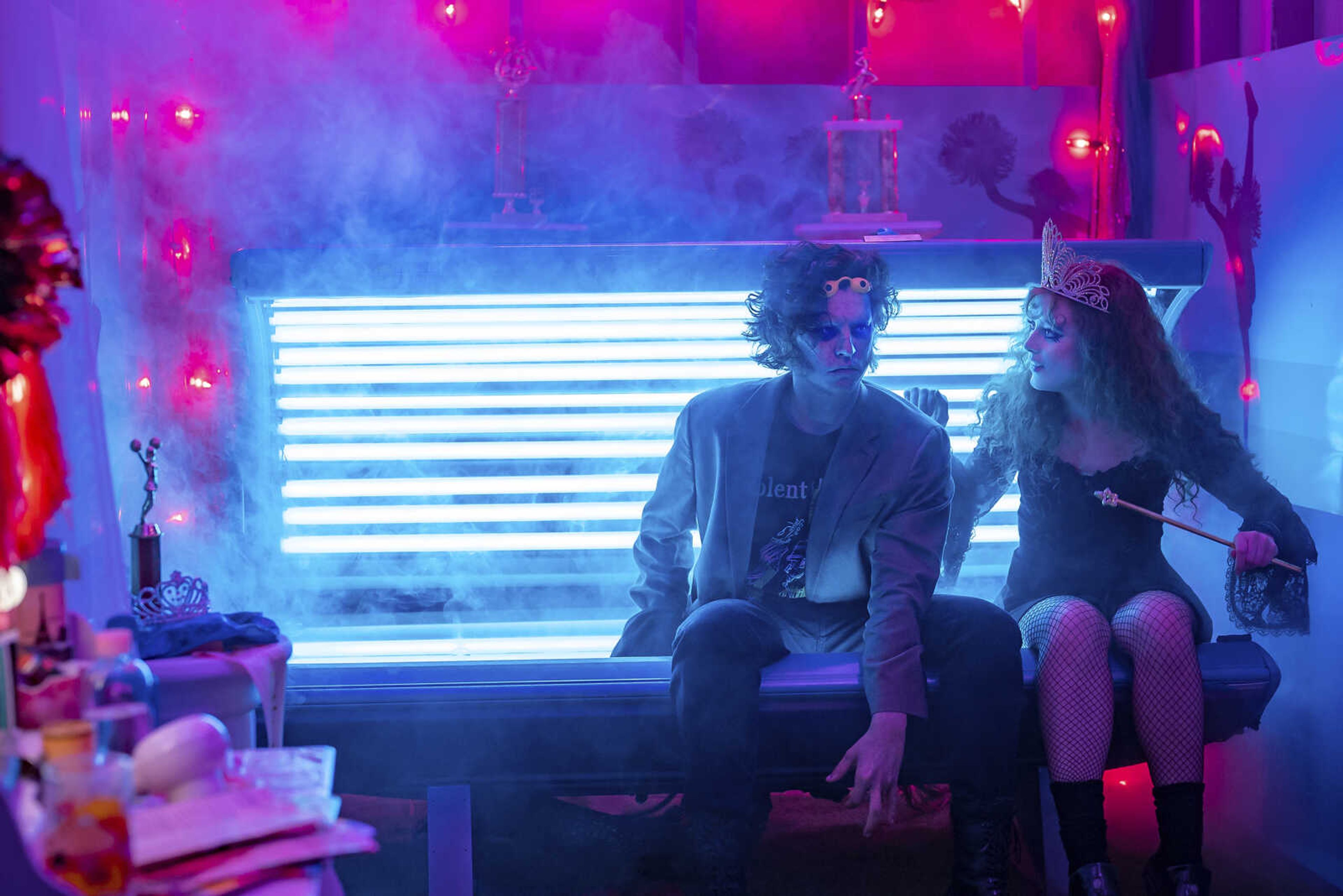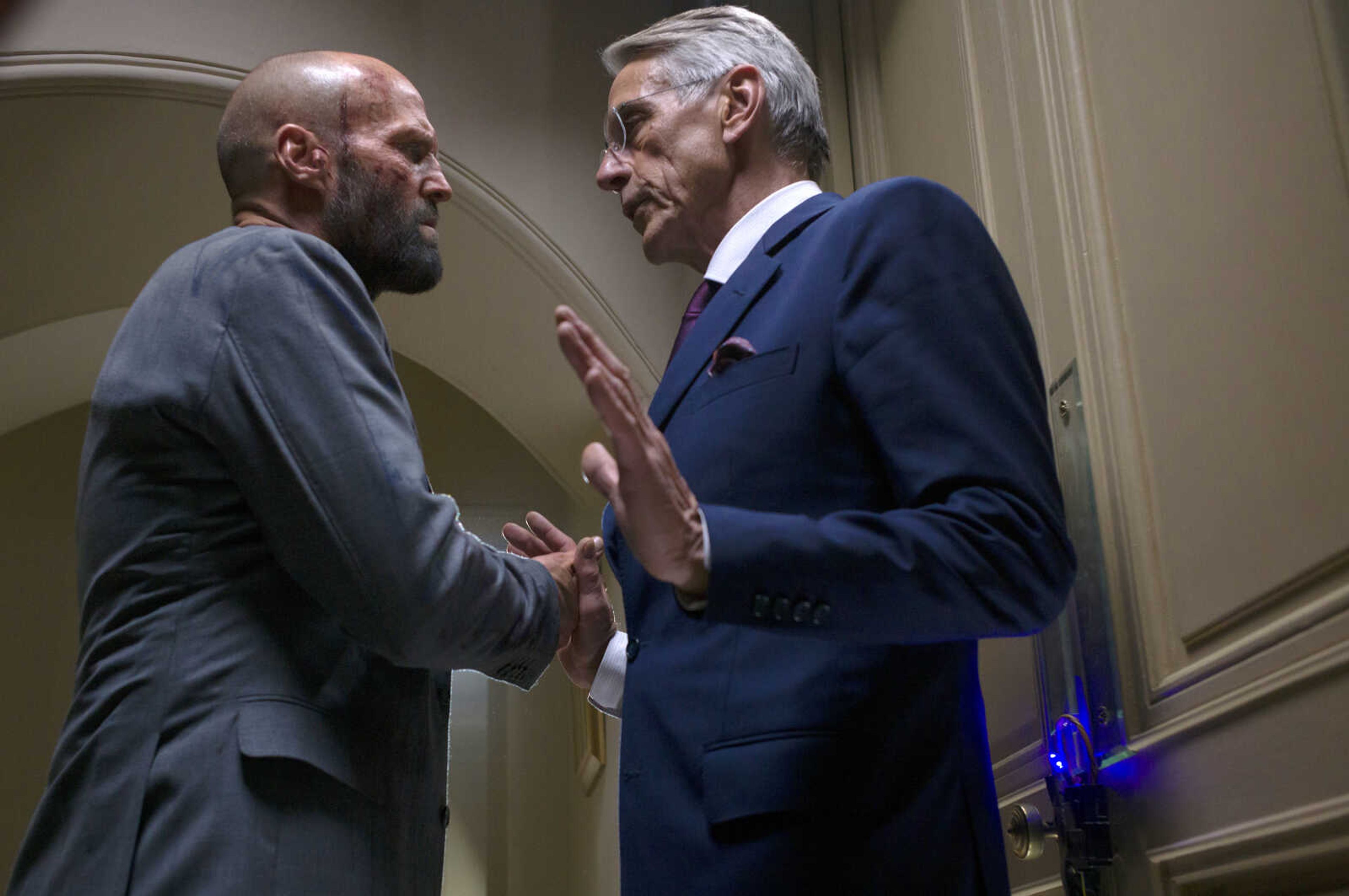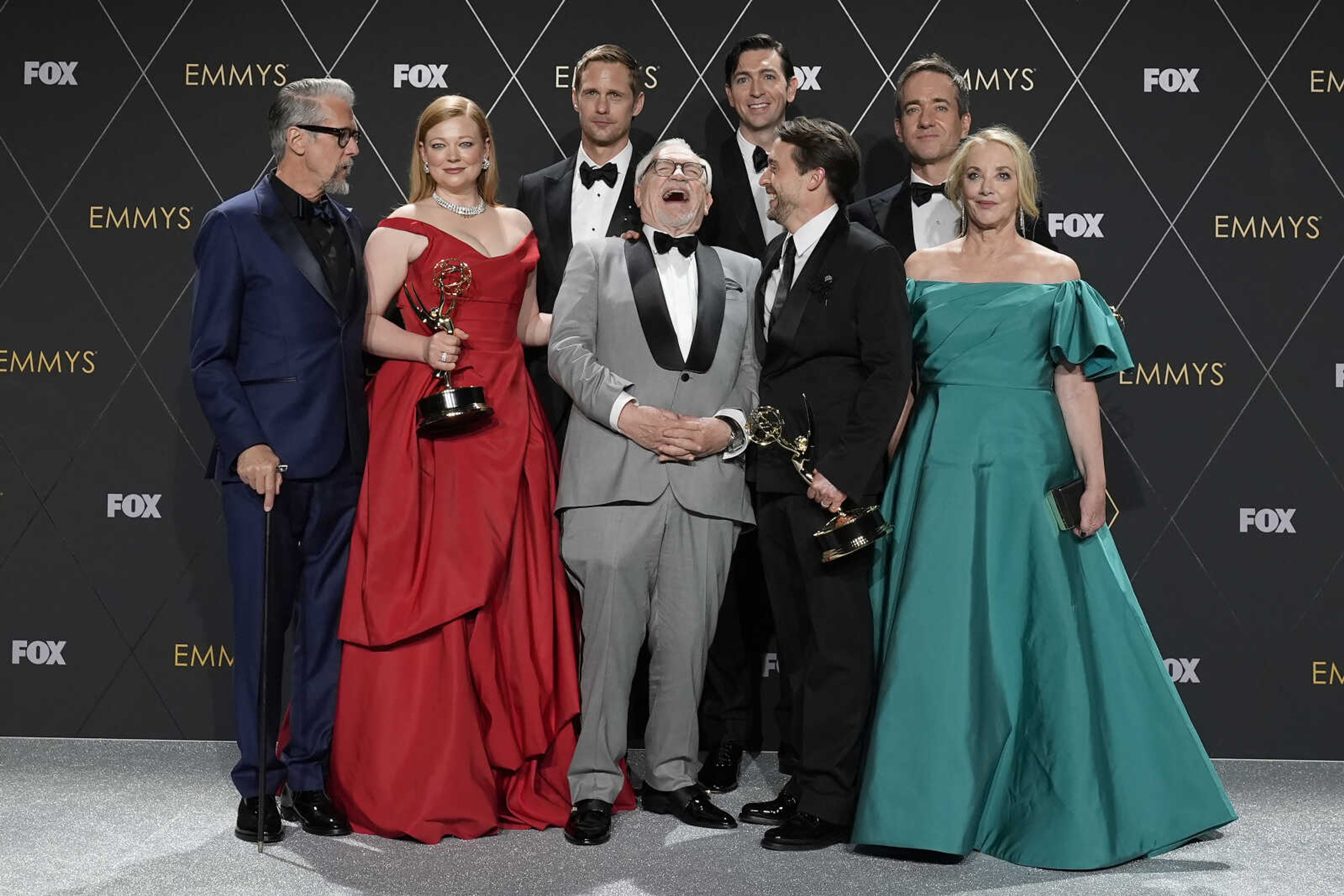Next-generation toys read brain waves, may help kids focus
SAN JOSE, Calif. -- A convincing twin of Darth Vader stalks the beige cubicles of a Silicon Valley office, complete with ominous black mask, cape and light saber. But this is no chintzy Halloween costume. It's a prototype, years in the making, of a toy that incorporates brain wave-reading technology...
SAN JOSE, Calif. -- A convincing twin of Darth Vader stalks the beige cubicles of a Silicon Valley office, complete with ominous black mask, cape and light saber.
But this is no chintzy Halloween costume. It's a prototype, years in the making, of a toy that incorporates brain wave-reading technology.
Behind the mask is a sensor that touches the user's forehead and reads the brain's electrical signals, then sends them to a wireless receiver inside the saber, which lights up when the user is concentrating. The player maintains focus by channeling thoughts on any fixed mental image, or thinking specifically about keeping the light sword on. When the mind wanders, the wand goes dark.
Engineers at NeuroSky Inc. have big plans for brain wave-reading toys and video games. They say the simple Darth Vader game -- a relatively crude biofeedback device cloaked in gimmicky garb -- portends the coming of more sophisticated devices that could revolutionize the way people play.
Technology from NeuroSky and other startups could make video games more mentally stimulating and realistic. It could even enable players to control video game characters or avatars in virtual worlds with nothing but their thoughts.
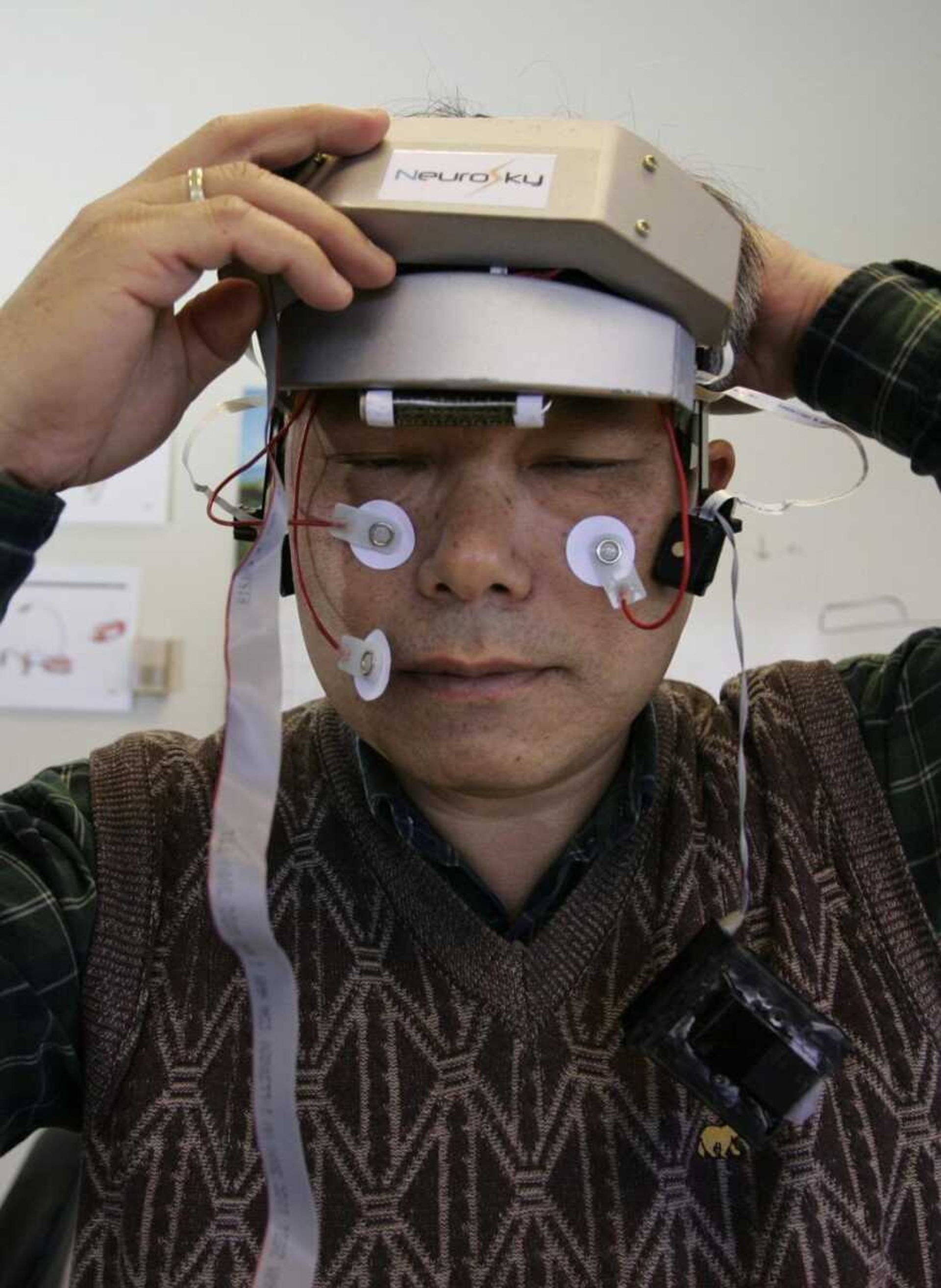
Adding biofeedback to "Tiger Woods PGA Tour," for instance, could mean that only those players who muster Zen-like concentration could nail a putt. In the popular first-person shooter "Grand Theft Auto," players who become nervous or frightened would have worse aim than those who remain relaxed and focused.
NeuroSky's prototype measures a person's baseline brain-wave activity, including signals that relate to concentration, relaxation and anxiety. The technology ranks performance in each category on a scale of 1 to 100, and the numbers change as a person thinks about relaxing images, focuses intently, or gets kicked, interrupted or otherwise distracted.
The technology is similar to more sensitive, expensive equipment that athletes use to achieve peak performance. Koo Hyoung Lee, a NeuroSky co-founder from South Korea, used biofeedback to improve concentration and relaxation techniques for members of his country's Olympic archery team.
"Most physical games are really mental games," said Lee, also chief technology officer at San Jose-based NeuroSky, a 12-employee company founded in 1999. "You must maintain attention at very high levels to succeed. This technology makes toys and video games more lifelike."
Boosters say toys with even the most basic brain wave-reading technology -- scheduled to debut later this year -- could boost mental focus and help children with attention deficit hyperactivity disorder, autism and mood disorders.
But scientific research is scant. Even if the devices work as promised, some question whether people who use biofeedback devices will be able to replicate their relaxed or focused states in real life, when they're not attached to equipment in front of their television or computer.
Elkhonon Goldberg, clinical professor of neurology at New York University, said the toys might catch on in a society obsessed with optimizing performance -- but he was skeptical they'd reduce the severity of major behavioral disorders.
"These techniques are used usually in clinical contexts. The gaming companies are trying to push the envelope," said Goldberg, author of "The Wisdom Paradox: How Your Mind Can Grow Stronger As Your Brain Grows Older." "You can use computers to improve the cognitive abilities, but it's an art."
Connect with the Southeast Missourian Newsroom:
For corrections to this story or other insights for the editor, click here. To submit a letter to the editor, click here. To learn about the Southeast Missourian’s AI Policy, click here.
